A garden trellis isn’t just a decorative element—it’s a practical tool that can support climbing plants, add structure to your garden, and even serve as a focal point. If you’re ready to roll up your sleeves and get crafty, this guide will walk you through every step of building a robust trellis that will stand up to wind, rain, and a whole lot of greenery.
Materials & Tools You’ll Need
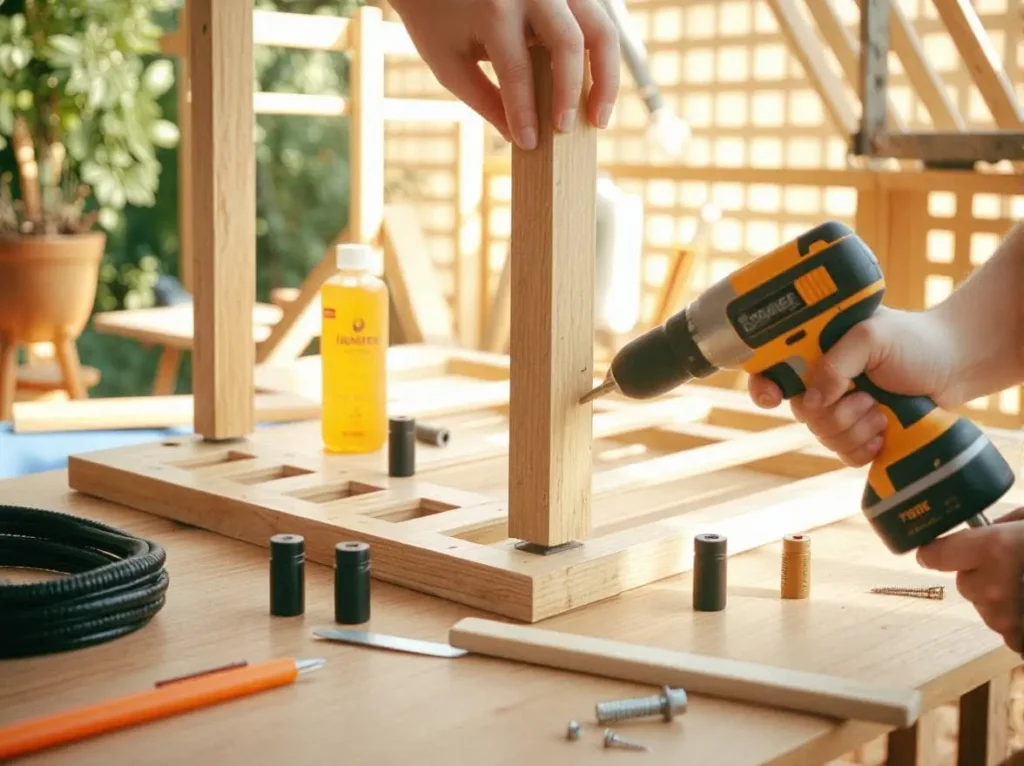
Before you get started, gather the following supplies:
- Wood or Metal Posts: Choose durable material like cedar or galvanized metal for longevity.
- Trellis Lattice or Wire: Depending on your design preference.
- Screws or Nails: Weather-resistant hardware is a must.
- Drill or Hammer: Essential for assembly.
- Saw (if using wood): To cut posts or lattice to size.
- Measuring Tape & Level: Accuracy is key.
- Garden Stakes or Anchors: For added stability.
- Optional Paint or Sealant: To protect the trellis from the elements.
Step 1: Plan Your Trellis Design
Before you start drilling, sketch out your trellis design. Consider the following:
- Size & Shape: How tall and wide do you want your trellis? Make sure it will support the types of climbing plants you plan to grow.
- Location: Pick a sunny spot that gets at least 6 hours of sunlight, or a location that best suits your plant’s needs.
- Style: Do you prefer a simple lattice design or a more decorative pattern? Your design should complement your garden’s aesthetic.
Step 2: Prepare Your Materials
Once your design is in place:
- Measure and Cut: Use your measuring tape and saw to cut posts and lattice/wire to the right lengths. Double-check your measurements!
- Sand & Seal (Optional): If you’re using wood, lightly sand any rough edges and apply a sealant or paint to prolong its life.
Step 3: Assemble the Trellis
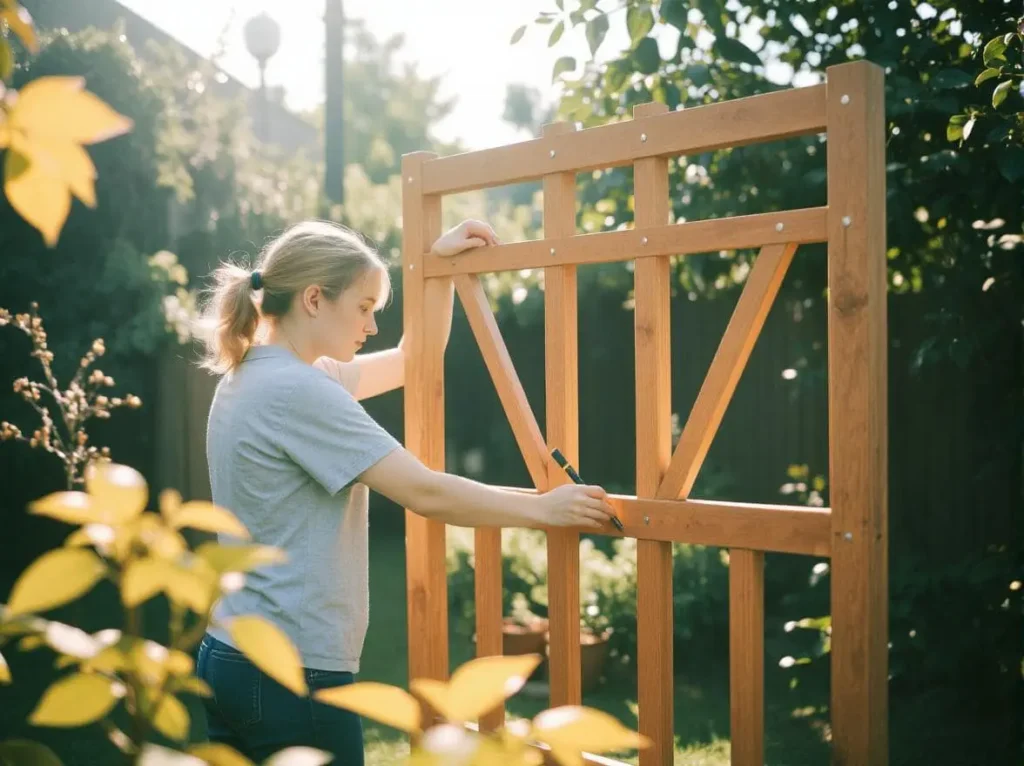
Now it’s time to put it all together:
- Position Your Posts: Mark the spot where the trellis will stand. If it’s free-standing, dig small holes (about 1-2 feet deep) for the posts. For a wall-mounted trellis, ensure you’re attaching to a sturdy surface.
- Secure the Posts: Place the posts in the holes and fill with gravel or concrete for extra stability. Use a level to make sure each post is vertical.
- Attach the Lattice/Wire: Once your posts are set, position your lattice or wire. Use screws or nails to attach it firmly to the posts. If you’re using wire, you may need to twist it tightly around the posts for a secure fit.
Step 4: Finishing Touches
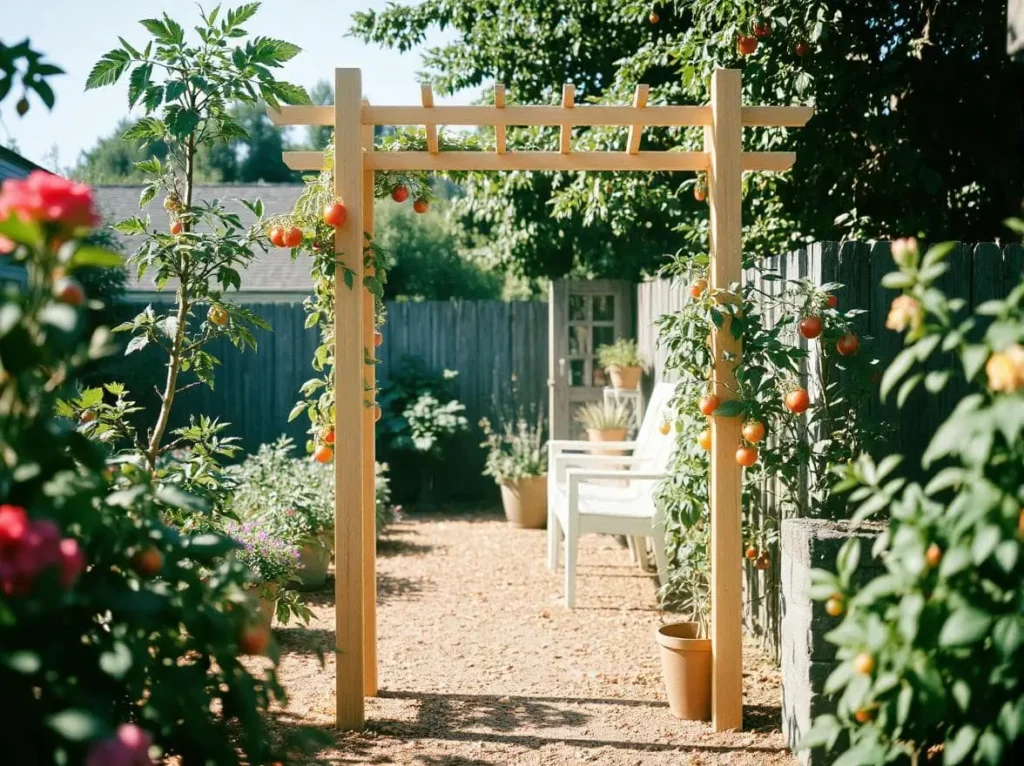
After assembly:
- Inspect Your Work: Check that all parts are securely fastened and the trellis is level.
- Add Extra Support: Consider adding garden stakes or anchors at the base if you live in a windy area.
- Personalize It: Now’s the perfect time to add any decorative elements or extra layers of protection with paint or additional sealant.
Tips for Long-Lasting Durability
- Maintenance: Regularly inspect your trellis for loose hardware or signs of weathering. Tighten screws or nails as needed.
- Weather Protection: If you’re in an area with harsh weather, reapply a sealant or protective paint every couple of years.
- Plant Care: When training plants to climb, use soft ties or twine to avoid damaging the stems.
Frequently Asked Questions (FAQ)
What size trellis should I build for my garden?
It depends on the space and the plants you plan to grow. A trellis around 6-8 feet tall works well for most climbing plants like tomatoes or ivy, but adjust based on your needs.
Can I build a trellis without digging holes?
Yes, you can build a wall-mounted trellis using brackets or a freestanding one with base supports if you prefer not to dig.
How do I choose the best material for my trellis?
For durability, cedar or pressure-treated wood works great for wooden trellises, while galvanized metal is a fantastic, low-maintenance option for a sleek, modern look.
How much time does it take to build a trellis?
For a beginner, expect to spend a few hours on planning and assembly. With all materials at hand, you can complete a basic trellis in an afternoon.
What types of plants are best supported by a trellis?
Climbing plants such as tomatoes, cucumbers, beans, ivy, and flowering vines (like clematis) thrive with the support of a well-built trellis.
Building your own garden trellis is a fulfilling project that not only enhances your garden’s beauty but also provides sturdy support for your plants. Give it a try, and soon enough you’ll be enjoying the fruits—and blooms—of your labor. Happy gardening!
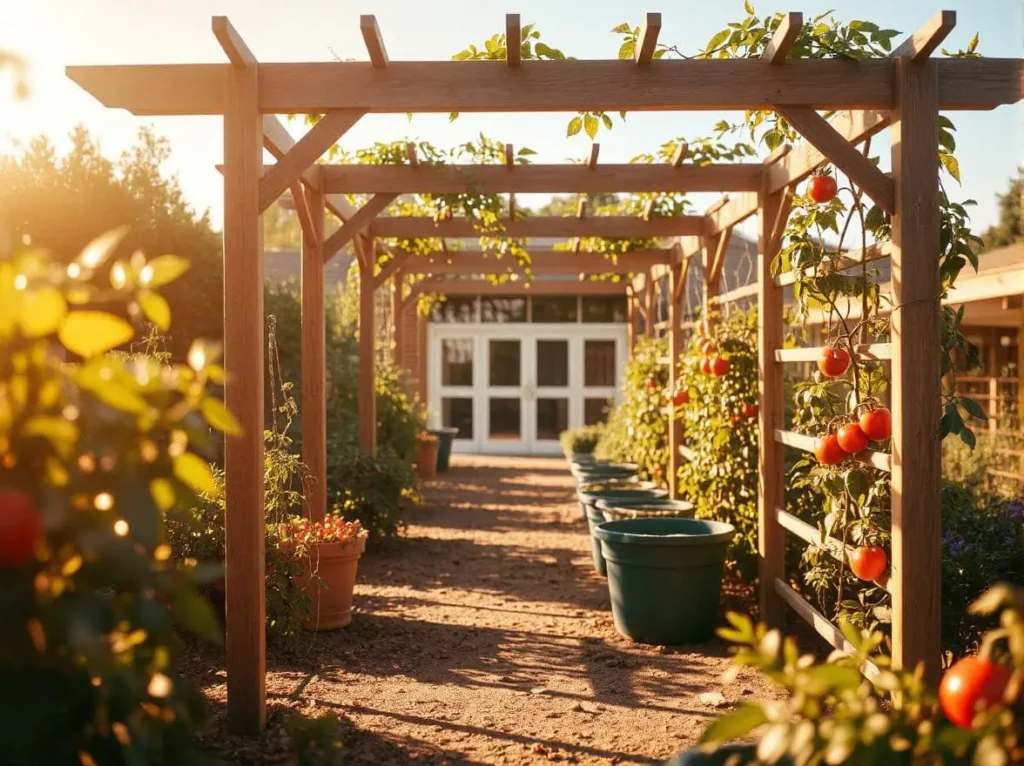

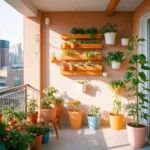
Pingback: How to Create a Vertical Garden: Easy DIY Ideas for Small Spaces - gardendiyhaven.com
This writing has a deep, soothing quality to it — like the feeling of watching a sunset and finding peace in the quiet.